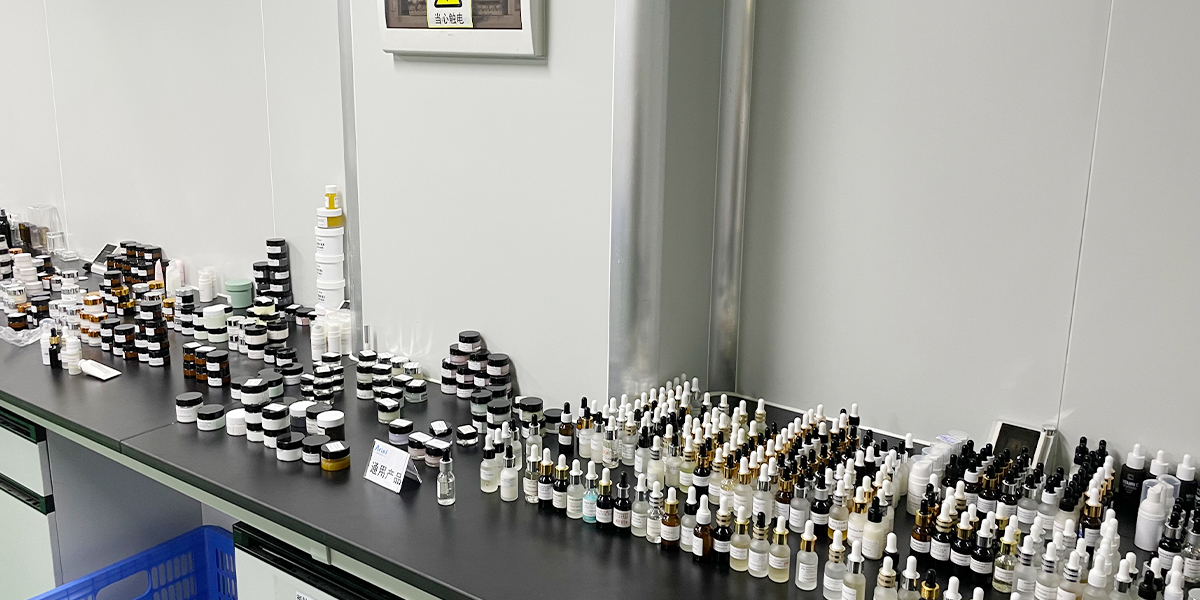The most important thing to make a good skin care product is to consider the efficacy of skin care products. Only when the product’s efficacy requirements meet the needs of consumers can we improve customer satisfaction and allow customers to continue to place orders for us.
Research and Understand Skin Needs
Research and understanding your skin’s needs are key to creating effective skincare. Different skin types and concerns require specific attention and care. For example, dry skin needs deep hydration and moisturization, while oily skin needs oil control and pore cleansing. Sensitive skin needs a gentle, non-irritating formula.
With an in-depth understanding of skin needs, skin care manufacturers can choose the right ingredients and formulations. Natural plant extracts such as Aloe Vera, Green Tea, and Lavender have moisturizing, soothing, and antioxidant properties for dry and sensitive skin. Ingredients such as fruit acids and salicylic acid can help control oil secretion and remove dead skin cells, suitable for oily and acne-prone skin.
In addition, understanding the needs of the skin also needs to consider the changes in the needs of different age groups. Younger skin may be more concerned with moisturizing and sun protection, while mature skin may be more concerned with anti-aging and firming effects.
All in all, through in-depth research and understanding of different skin needs, skin care manufacturers can develop targeted products to meet the needs of consumers. Such skin care products can provide people with effective care, improve skin problems, and enhance the health and beauty of the skin.
Use high-quality ingredients
Selecting and using high-quality ingredients is critical when making skin care products. High-quality ingredients play a key role in the effectiveness and safety of skin care products.
First, high-quality ingredients that are proven effective. They have proven efficacy in improving skin conditions through scientific research and clinical testing. The effectiveness of these ingredients helps to address skin concerns such as dryness, breakouts, wrinkles, etc. while delivering the results skincare products promise.
Second, high-quality ingredients have higher purity and stability. They undergo a meticulous extraction and processing process to ensure purity and maintenance of potency. This high-purity ingredient is better absorbed and utilized by the skin for better results. In addition, high-quality ingredients generally have longer stability and are less susceptible to environmental factors such as oxidation, light or temperature changes.
Most importantly, using high-quality ingredients provides safety and reliability. These ingredients have undergone strict safety evaluation and testing to ensure that they will not cause adverse reactions or side effects under normal use conditions. This is essential for the user’s skin health.
Therefore, when making skin care products, it is crucial to select and use high-quality ingredients. This requires manufacturers to work with reliable suppliers to ensure the source and quality of ingredients. By selecting high-quality ingredients, skin care product manufacturers can provide safe and effective products that meet consumers’ needs for good skin care results, and build user trust and loyalty to the brand.
Formulation Design
The formula design of skin care products is a complex and meticulous process, which needs to consider many factors, including the target of the product, compatibility of ingredients, stability, effect, safety, and so on. The following are the general steps in the formulation design of skin care products:
Determine Product Goals: First, clarify the type and goal of skin care products, such as cleansing products, creams, lotions, masks, etc., and the efficacy goals of the products, such as moisturizing, anti-wrinkle, whitening, etc.
Research Ingredients: Learn about and research a wide range of possible ingredients including active ingredients, co-ingredients, preservatives, and more. Active ingredients are the main ingredients that give the product a specific effect, auxiliary ingredients are used to adjust the texture and stability of the product, and preservatives are used to ensure the safety of the product.
Ingredient Compatibility and Stability Testing: Before designing a formulation, it is necessary to test the compatibility and stability between ingredients. Certain ingredients may interact, resulting in reduced product quality or adverse reactions.
Determine the Proportion of Ingredients: According to the product target and the nature of the ingredients, determine the proportion of each ingredient in the formula. Different ingredient levels can affect the efficacy and texture of the product.
Safety Assessment: Conduct a safety assessment to ensure that the ingredients in the formula are safe under the recommended use and will not cause adverse reactions to users.
Formulating: Based on the previous steps, formulate the final skin care formula. This may take many trials and adjustments until the effect and quality of tone are achieved.
Production Process: Determine the production process and operation process of skin care products to ensure the stability and consistency of products in mass production.
Quality Control: Establish a quality control system to ensure that each batch of products meets quality standards and safety requirements.
Suitable Concentration
The concentration of a skin care product has a significant impact on the efficacy of the product. The concentration of the different ingredients can determine the strength of the product and how pronounced the effect is.
The concentration of active ingredients: Active ingredients are the main ingredients of skin care products that give specific effects to the product, such as vitamin C, hyaluronic acid, fruit acid, etc. A higher concentration of active ingredients usually means more powerful effects, such as better anti-oxidation, whitening, moisturizing, and other effects. However, high concentrations of active ingredients may also cause allergic reactions or irritation and thus need to be used under the premise of safety evaluation.
Concentration of co-ingredients: In addition to active ingredients, co-ingredients are included in skin care products to adjust the texture, stability, and feel of the product. The concentration of auxiliary ingredients will affect the texture and penetration of the product, thereby affecting the experience and effect of the product.
Effective Concentration Range: For some active ingredients, there is an effective concentration range within which best results can be obtained. Concentrations that are too low may have no noticeable effect, while concentrations that are too high may cause adverse reactions or waste ingredients. Therefore, reasonable concentration selection is the key.
Compatibility: Certain ingredients may interact at high concentrations resulting in decreased product stability or adverse reactions. Therefore, compatibility between ingredients needs to be considered to avoid quality problems.
Product type and use: Different types of skin care products, such as day creams, night creams, masks, etc., due to the different frequencies and times of use, the concentration of ingredients will also be adjusted to suit different uses and usage environments.
In general, the concentration design of skin care products needs to comprehensively consider factors such as efficacy, compatibility, safety, and product type of ingredients. Concentrations that are too high or too low may affect the efficacy and safety of the product. Therefore, skin care product manufacturers usually use scientific research and experiments to determine the optimal concentration of ingredients to achieve the desired skin care effect and ensure user experience and security.
Security Test
The safety testing of skin care products is an important link to ensure that the products have no negative impact on the health of users when they are used. Before releasing skin care products to the market, manufacturers usually conduct a series of safety tests to ensure that the ingredients and methods of use of the products comply with regulations and standards and will not cause allergic reactions or other adverse reactions. Here are some common skin care product safety tests:
Skin irritation test: This is an important test to see if a product can cause skin irritation or an allergic reaction. Usually, the product is applied on the skin of the volunteers, and redness, swelling, itching, and other adverse reactions are observed for some time.
Skin Sensitivity Test: Used to detect whether a product may cause an allergic reaction. Certain ingredients, such as certain fragrances, preservatives, etc., may cause allergic reactions in people with sensitive skin.
Eye irritation testing: Eye irritation testing is performed on eye products, especially eye creams and eye cosmetics, to ensure that the product does not cause eye discomfort or irritation.
Safety assessment: Comprehensively evaluate the safety data of all ingredients to determine whether the concentration of each ingredient in the product is safe and the compatibility between ingredients.
Microbiological testing: Testing products for microbial contamination. Microbial contamination can lead to product spoilage, posing a health risk to users.
Stability test: Test the stability of the product under different conditions (such as temperature, light, etc.) to ensure that the product maintains good quality during the shelf life.
Penetration test: For some special types of skin care products, such as whitening products, it is necessary to test whether the ingredients can penetrate the skin layer to achieve the expected effect.
Packaging material testing: Packaging materials are tested to ensure that they do not adversely affect product quality and do not release hazardous substances.
All these tests are to ensure the safety and quality of skin care products and protect the rights and interests of consumers. In addition to these standard tests, some countries or regions also have specific regulatory requirements for the safety and use of ingredients in skin care products. Manufacturers must comply with these regulations and obtain relevant certification or approval before they can legally market their products.
Validity Test
Effectiveness testing of skin care products is an important step in ensuring that products perform as claimed. Before manufacturing high-quality skin care products, their efficacy must be fully verified. Validation testing usually includes clinical testing and instrumental measurements. In the clinical test, volunteers use the product and record their experience, and evaluate the effect of the product through the measurement of skin physiological indicators. Instrumental measurement uses scientific instruments to evaluate the impact of the product on the skin’s moisture content, elasticity, and pigmentation. These tests ensure that skin care products can truly deliver their benefits, allowing users to achieve real results and increasing the credibility of the products. Through the effectiveness test, consumers can rest assured to choose the right skin care products to meet their individual needs, while helping the brand to establish a good reputation.
Quality Control and Production Standards
Quality control and production standards for skin care products are key to ensuring product safety and high quality. When manufacturing skin care products, a series of production standards and quality control measures must be strictly followed. This includes rigorous screening of raw material suppliers to ensure that purchased ingredients meet quality standards and undergo adequate safety testing.
During the production process, the production environment is strictly controlled to ensure hygiene and cleanliness. Check equipment regularly to ensure the stability and consistency of the production process. At the same time, strict inspection and testing are carried out to ensure that the products meet the specified quality standards.
Quality control also includes sample preservation for each batch of products for traceability and quality problem handling. The packaging and labeling of products must be clear and clear to ensure that product information is true and accurate and in compliance with regulatory requirements.
Strict adherence to quality control and production standards not only ensures the safety and effectiveness of skin care products but also enhances the competitiveness and reputation of the products. At the same time, for consumers, buying products that meet the standards means that they can use them with confidence, effectively solve skin problems, and obtain a good use experience. Therefore, quality control and production standards play a vital role in the skin care industry and are also the cornerstones that drive the sustainable development of the entire industry.
Continuous Research and Improvement
The continuous research and improvement of skin care products is the key to maintaining the competitiveness of the industry and meeting the needs of consumers. With the continuous advancement of science and technology and people’s constant pursuit of beauty and skin care, the skin care industry must continue to conduct research and innovation.
Ongoing research can help in the discovery of new active ingredients and formulations, improving the efficacy and effectiveness of products. By understanding the physiological mechanism and needs of the skin, more precise skin care products can be developed to meet consumers with different skin types and needs.
At the same time, continuous improvement is also an integral part. By maintaining close communication with consumers, collecting user feedback and needs, timely improving product formulations and user experience. Consumers’ opinions and suggestions on products are valuable resources, which can help manufacturers better understand market demand and provide better products.
Continuous research and improvement also contribute to the sustainable development of the skincare industry. When developing new products, you can consider environmental factors and choose more environmentally friendly packaging materials and ingredients. At the same time, continue to improve product formulations to reduce the impact on the environment.





